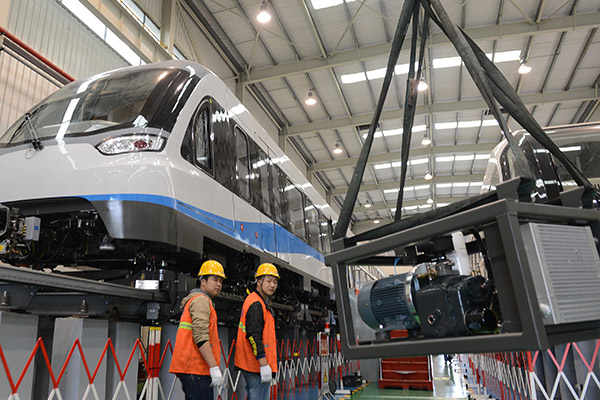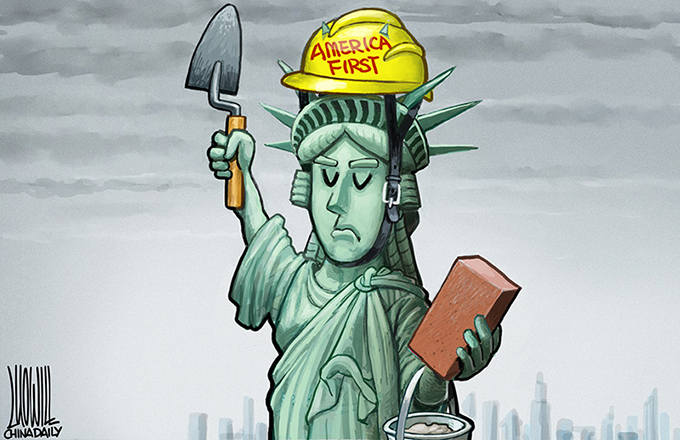600-kph maglev trains on track
 |
|
Workers at a magnetic levitation train manufacturing company in Zhuzhou, Hunan province. [Xu Xing/for China Daily] |
Besides those two kinds, railway major China Railway Rolling Stock Corp is also going full steam ahead on studying three types of freight trains and a high-speed train, said Sun Bangcheng, deputy director of the company's research institute, in a recent speech.
"As one of the nation's 18 research projects, CRRC's advanced rail transit project was launched in 2016. With over 9-billion-yuan ($1.37 billion) funding, the project is projected to be completed by 2021," Sun said.
He was quoted by Science and Technology Daily, the newspaper of the Ministry of Science and Technology.
CRRC's cutting-edge technology and product development have been fueled by the country's Made in China 2025 strategy, which aims to promote high-end manufacturing.
Maglev trains are often considered safer and cheaper in comparison to constructing traditional metro and light rail systems.
The maglev hovers several centimeters above the tracks. It is propelled by electrically charged magnets, and uses specially designed tracks to keep the trains from overturning or derailing.
However, there are concerns about the cost of constructing the infrastructure for a commercial maglev service, experts said.
Zhao Jian, a professor at the School of Economics and Management at Beijing Jiaotong University, said that operators should estimate an appropriate passenger flow volume, which is normally smaller than that of the subway. "Then keep it in control and avoid overloading."
The other challenge, according to Zhao, is to ensure the trains operate at a reasonable frequency.
Hu Siji, another professor at the university, who specializes in logistics, said the fact that maglev trains and subway trains are "two completely different systems" might be one bottleneck for the industry's growth.
"The two systems are not directly linked. Although the maglev train runs faster, passengers' actual travel time will be longer if the transfers are not convenient," Hu was quoted by Beijing Business Today.
Some maglev train line costs ran beyond budget, local media reported.
China's rail transit innovation and immense market potential will provide a solid foundation for the maglev train industry, said Qian Qingquan, an academician with the Chinese Academy of Engineering and a professor at Southwest Jiaotong University.
The country has already formed a complete industrial chain of low to medium speed maglev trains, he said.
Back in 2002, the world's first maglev line was launched in China, providing a link between a metro station and the Pudong International Airport in Shanghai.
The 30-km journey takes less than eight minutes, as the train has a speed of up to 430 kph.

























